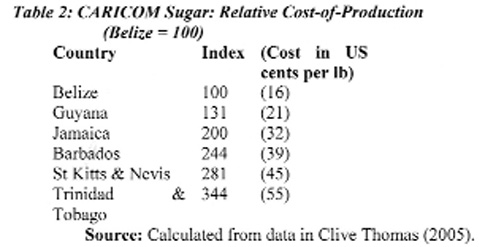Introduction
The detailed figures presented in last Sunday’s column on Guyana’s sugar production for the years 1961 to 2010 (on the basis of 3-year averages) and the accompanying chart reveal three notable features. The first of these is that sugar production had peaked during the period 1961 to 1972. Thus for three of the 3-year average periods (1961-63; 1967-69 and 1970-72) sugar production exceeded 305,000 metric tons (tonnes). The second feature is that between 1997 and 1999 output fell to its lowest level at 153,000 tonnes or approximately one-half the level attained at peak output. The third feature is that after substantially regaining high output levels in the period 2002 to 2005, there was a consistent decline in production after 2005. Thus for the five years (2006-2010) sugar production only averaged 241,000 tonnes; this was about 50,000 tonnes below the average production for the years 2003-05.
Comparing targets with output
Over the next few columns I shall examine the factors that lie behind these observations. Before I do so readers should observe that while the annual sugar production figures reveal a trend of stagnation and decline in Guyana’s sugar industry over the past few decades; a more realistic manifestation of this stagnation and decline is gleaned by comparing the targeted levels of production set by GuySuCo’s management against

